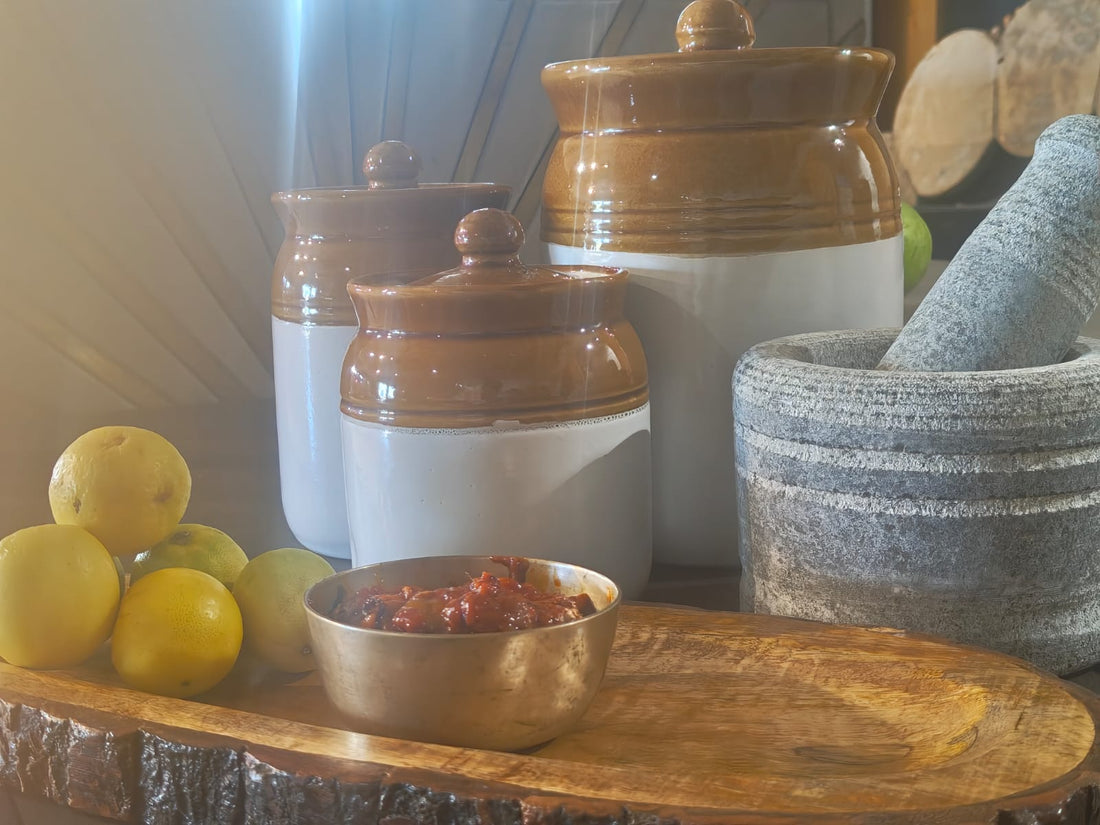Pickling is more than just a way to preserve food. It’s a time-honored tradition that has shaped cultures, enhanced meals, and connected generations across centuries. Have you ever wondered how people kept food fresh before refrigerators? Long before the invention of refrigerators and artificial preservatives, civilizations around the world found ways to extend the shelf life of food through fermentation and preservation techniques. From ancient times to modern kitchens, pickling has been a way to save, savour, and spice up meals. Today, pickles are not just condiments; they represent history, heritage, and the wisdom of food preservation.
The Origins of Pickling
Pickling dates back over 4,000 years, with some of the earliest records found in Mesopotamia. Different civilizations came up with their own ways to preserve food, and it’s fascinating to see how each culture added its unique touch.
- Mesopotamians & Egyptians: Ancient Mesopotamians were known to soak cucumbers in brine, while Egyptians pickled vegetables to ensure they had food even in times of scarcity. It is said that Cleopatra included pickles in her diet, believing they contributed to her beauty.
- Greeks & Romans: The Greeks and Romans took pickling a step further by using vinegar as a preservative. Pickled vegetables and meats were common, especially among Roman soldiers who needed durable food for long military campaigns.
- China: In ancient China, fermented vegetables were stored in clay pots and were a staple in diets, ensuring food security during harsh winters.
- India: The art of pickling flourished in India, where sun-drying, mustard oil, and a blend of spices were used to create bold flavors. Indian pickles, or “achaar,” were often made using mangoes, lemons, chilies, and garlic, each prepared with patience and love.
Pickles Around the World
Pickles tell stories of migration, trade, and adaptation. Every culture developed its unique pickling traditions based on the climate, available ingredients, and local tastes.
India: The Land of Bold Flavors
Indian pickles vary by region, with each state having its signature method and spice blend. Some use mustard oil for its pungency, while others rely on brining and sun-drying. Pickles like Andhra Avakaya (spicy mango pickle), Punjabi Gobhi Gajar Shalgam Achaar (cauliflower, carrot, and turnip pickle), and Tamil Nadu’s Maavadu (baby mango pickle) showcase the diversity of Indian pickling techniques.
China & Korea: The Science of Fermentation
Asian countries such as China and Korea have perfected the art of fermented pickling. Kimchi, Korea’s famous pickled cabbage, is packed with probiotics and has become a global favorite. In China, preserved vegetables like Sichuan pickled mustard greens and fermented radish are staple side dishes.
Middle East & Mediterranean: Vinegar & Brine-Based Pickling
Pickled olives, turnips, and lemons are common in the Middle East. These pickles add depth to meals, from shawarmas to stews. In the Mediterranean, Italian giardiniera (a mix of pickled vegetables) and Greek pickled peppers are enjoyed as accompaniments to rich meals.
Europe & America: Cucumber Craze
Cucumber pickles dominate in the Western world, from kosher dill pickles in Jewish cuisine to bread-and-butter pickles in American households. Vinegar-based preservation became the norm, extending to pickled onions, eggs, and even sausages.
Pickles & Preservation: The Science Behind the Magic
Pickling works through one of two primary methods:
- Fermentation: This method relies on natural bacteria to produce lactic acid, which preserves the food. Kimchi, sauerkraut, and Indian-style fermented pickles fall into this category.
- Vinegar-Based Preservation: In this method, food is submerged in vinegar, which acts as an acid to prevent bacterial growth. This is common in American and European pickles.
Pickling Today: A Blend of Tradition & Innovation
While pickling is rooted in tradition, modern kitchens continue to experiment with flavors. From fusion pickles (such as kimchi-infused cucumbers) to gourmet artisanal pickles with unique spice blends, pickling has become an evolving culinary art.
Pickling is a bridge between the past and the present, preserving not just food but also cultural heritage and family traditions. Whether it’s a grandmother in an Indian home sun-drying mangoes for achaar or a chef in New York experimenting with pickled strawberries, the essence of pickling remains unchanged—it is a craft that brings people together through taste, time, and tradition.













